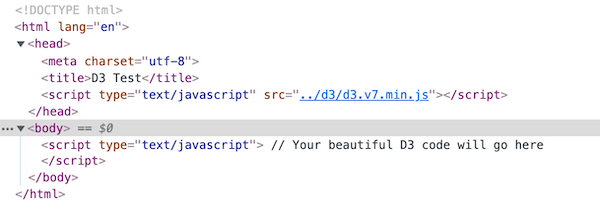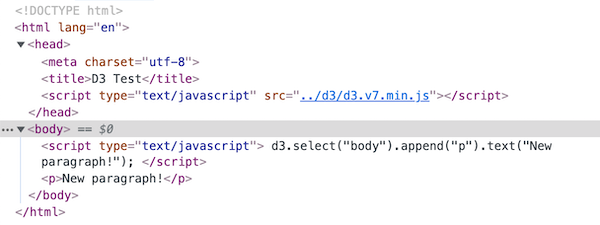Adding elements
One of your first steps will be to use D3 to create a new DOM element. Typically, this will be an SVG object for rendering a data visualization, but we’ll start simple, and just create a p paragraph element.
Begin with this simple HTML template:
<!DOCTYPE html><html lang="en"><head><meta charset="utf-8"><title>D3 Test</title><script type="text/javascript" src="d3/d3.v7.js"></script></head><body><script type="text/javascript">// Your beautiful D3 code will go here</script></body></html>
Here’s a demo page with that code. Yes, it doesn’t look like much, but open up your web inspector, and you should see something like:

Back in your HTML, replace the comment between the script tags with:
d3.select("body").append("p").text("New paragraph!");
Save and refresh (or view the corresponding demo page), and voilà! There is text in the formerly empty browser window, and the following in the web inspector:

See the difference? Now in the DOM, there is a new paragraph element that was generated on-the-fly! This may not be exciting yet, but you will soon use a similar technique to dynamically generate tens or hundreds of elements, each one corresponding to a piece of your data set.
Let’s walk through what just happened. In sequence, we:
- Invoked D3's
selectmethod, which selects a single element from the DOM using CSS selector syntax. (We selected thebody.) - Created a new
pelement and appended that to the end of our selection, meaning just before the closing</body>tag in this case. - Set the text content of that new, empty paragraph to “New paragraph!”
All of those crazy dots are just part of D3’s chain syntax.
Next up: Chaining methods →
D3 Tutorials